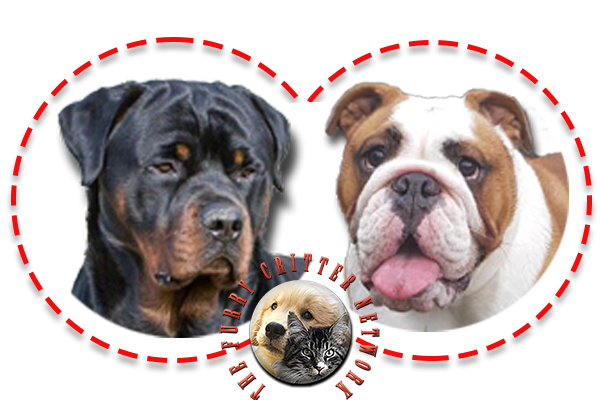Behavior
Rottweilers are a powerful breed with well-developed genetic herding and guarding instincts. Potentially dangerous behavior in Rottweilers usually results from irresponsible ownership, abuse, neglect, or lack of socialisation and training. However, the exceptional strength of the Rottweiler is an additional risk factor not to be neglected. It is for this reason that breed experts declare that formal training and extensive socialisation are essential for all Rottweilers. According to the AKC, Rottweilers love their owners and may behave in a clownish manner toward family and friends, but they are also protective of their territory and do not welcome strangers until properly introduced. Obedience training and socialization are required.
One study published in 2008 found that male Rottweilers have higher confidence, sharpness, and defense and play drives than females.
A 2008 study surveying breed club members found that while Rottweilers were average in aggressiveness (bites or bite attempts) towards owners and other dogs, it indicated they tend to be more aggressive than average toward strangers. This aggression appears correlated with watchdog and territorial instincts.
In the Rottweiler Handbook, Joan H. Walker states that "The Rottweiler is very territorial", meaning that the owner will have to regularly work with the dog to control its territorial aggressiveness.
Generally speaking, Rottweilers are good with children – a combination protector, and playmate. However, as with all dogs, caution must be exercised when infants and children are in their proximity. Infants and children should never be left unattended around any dog, including Rottweilers. Knowing and understanding the temperament of your Rottweiler is your responsibility. Remember that no dog should be brought into your home as a baby sitter. You need to teach the dog to respect your children, and teach your children to respect the dog.
The dog’s size can be a serious problem. Rottweilers have accidentally caused injuries to small children by bumping into them and knocking them down or into furniture. This bumping is a natural behavior of the Rottweiler, a legacy from the days when the breed was used to herd cattle. Rottweilers will bump and herd children or elderly family members. Some breeders recommend waiting until children are at least school age or older before bringing a Rottweiler into your home. The amount of space in your home, the age of your children, and the amount of time the dog will be in contact with your children should be part of your decision-making process.
Health
Rottweilers are a relatively healthy, disease-free breed. As with most large breeds, hip dysplasia can be a problem. For this reason, the various Rottweiler breed clubs have had X-ray testing regimens in place for many years. Osteochondritis dissecans, a condition affecting the shoulder joints, can also be a problem due to the breed's rapid growth rate. A reputable breeder will have the hips and elbows of all breeding stock X-rayed and read by a recognised specialist, and will have the paperwork to prove it.
They will also have certificates that their breeding animals do not have entropion or ectropion and that they have full and complete dentition with a scissor bite.
As with any breed, hereditary conditions occur in some lines. The Rottweiler is very prone to osteosarcoma, which is among the most common causes of early death in Rottweilers. For unknown reasons, Rottweilers are more susceptible than other breeds to become infected with parvovirus, a highly contagious and deadly disease of puppies and young dogs.
If overfed or under-exercised, Rottweilers are prone to obesity. Some of the consequences of obesity can be very serious, including arthritis, breathing difficulties, diabetes, heart failure, reproductive problems, skin disease, reduced resistance to disease and overheating caused by the thick jacket of fat under the skin.
As with the vast majority of large-breed dogs, Rottweilers are also predisposed to dilated cardiomyopathy.






